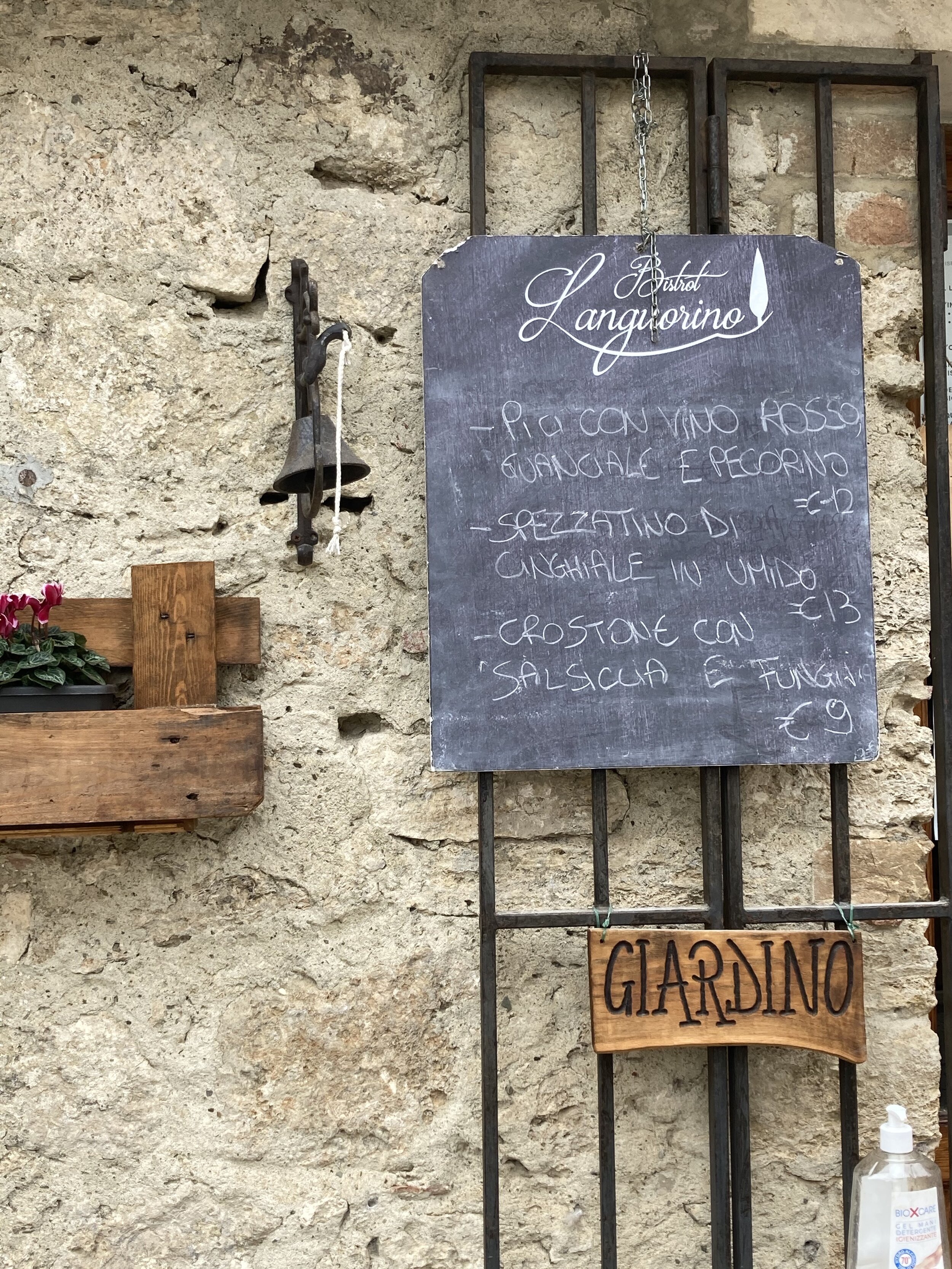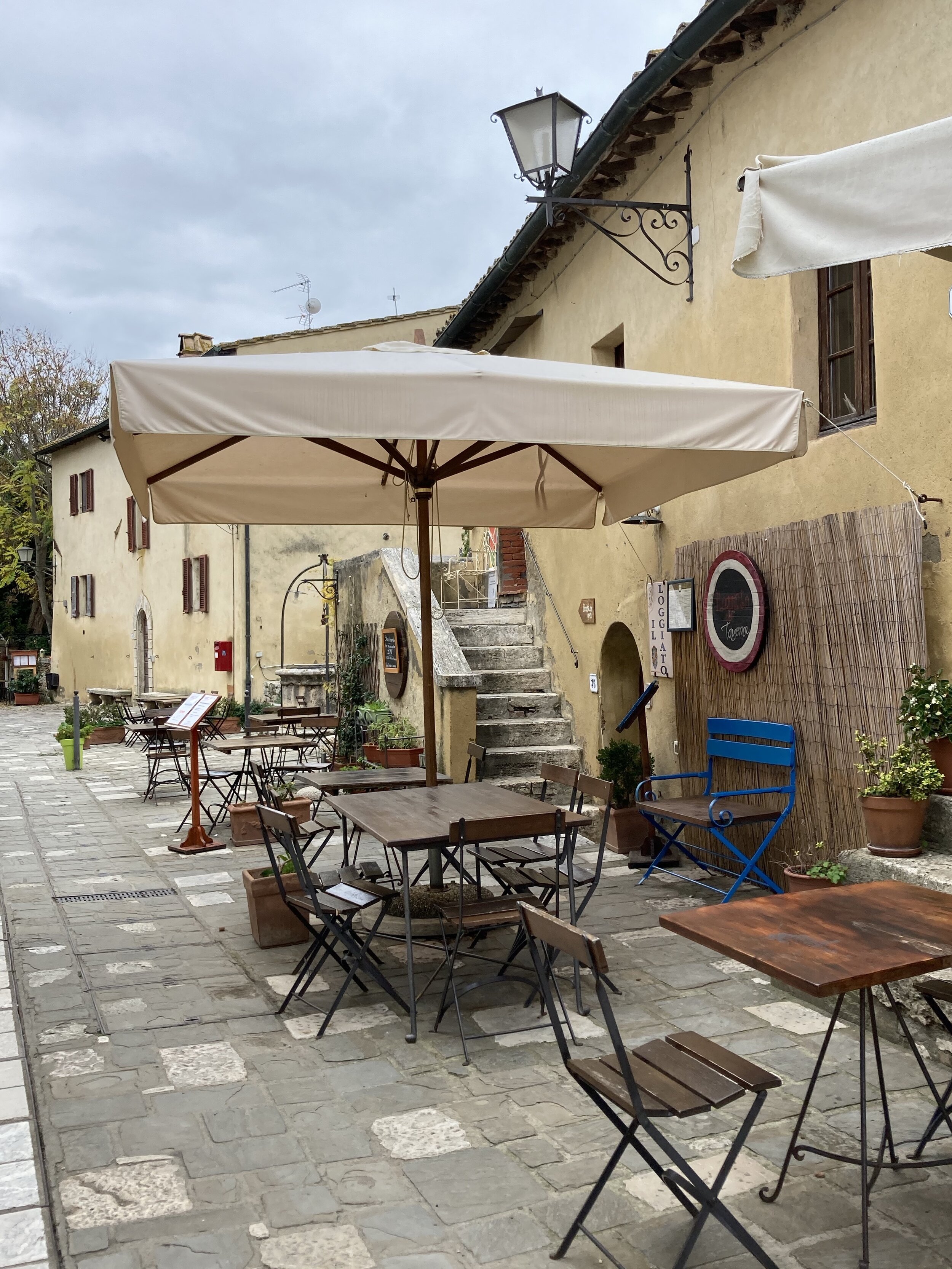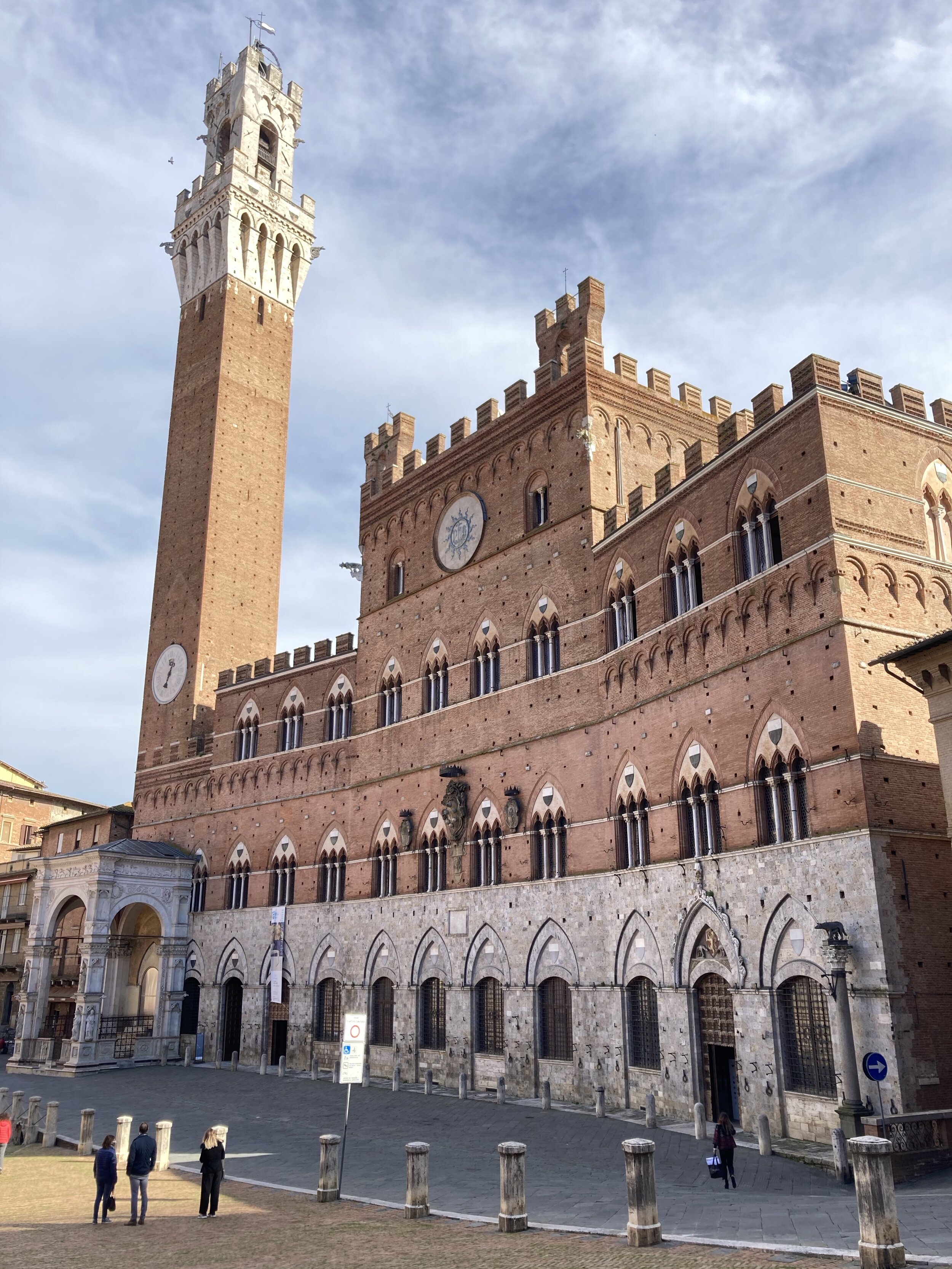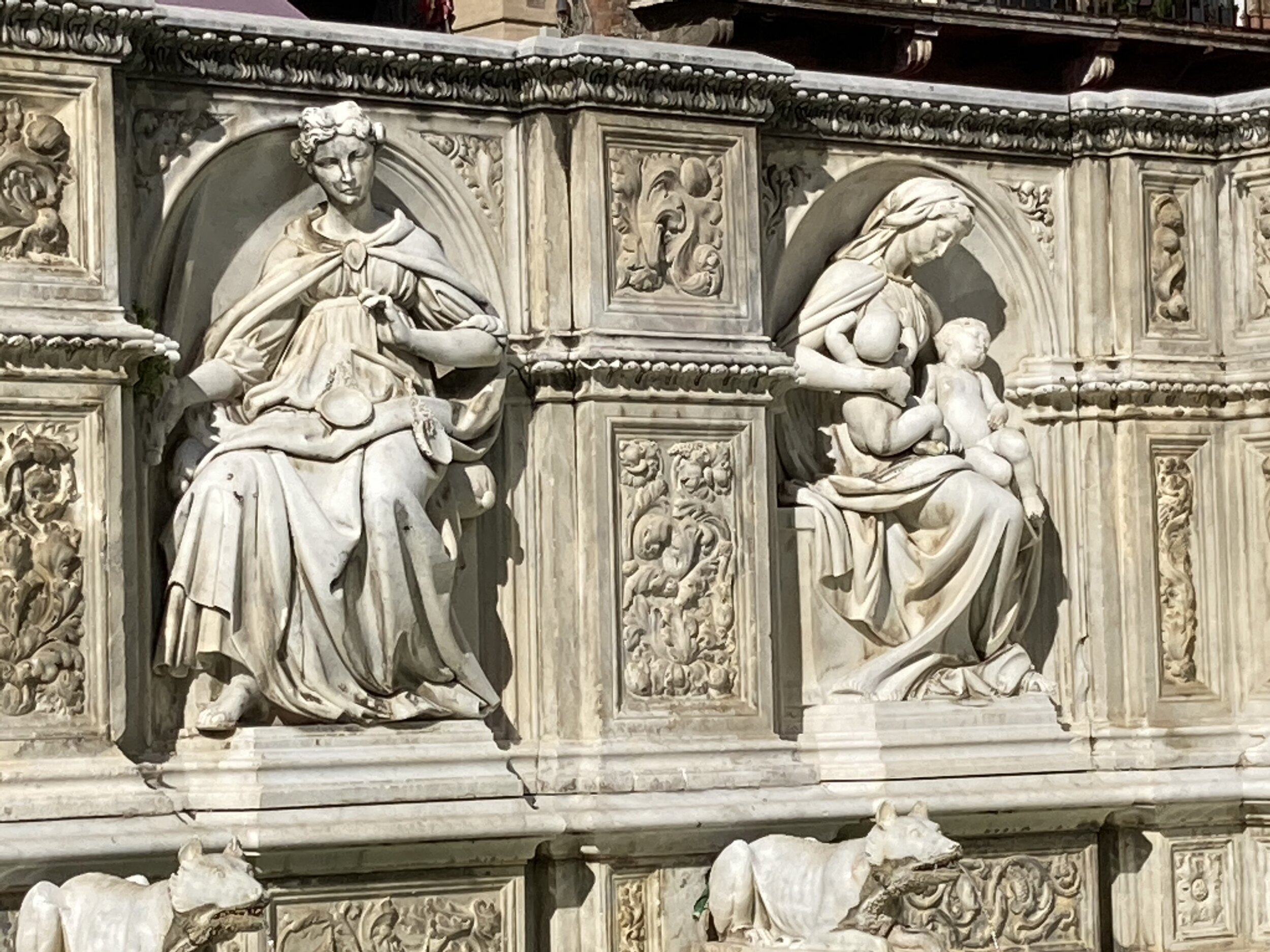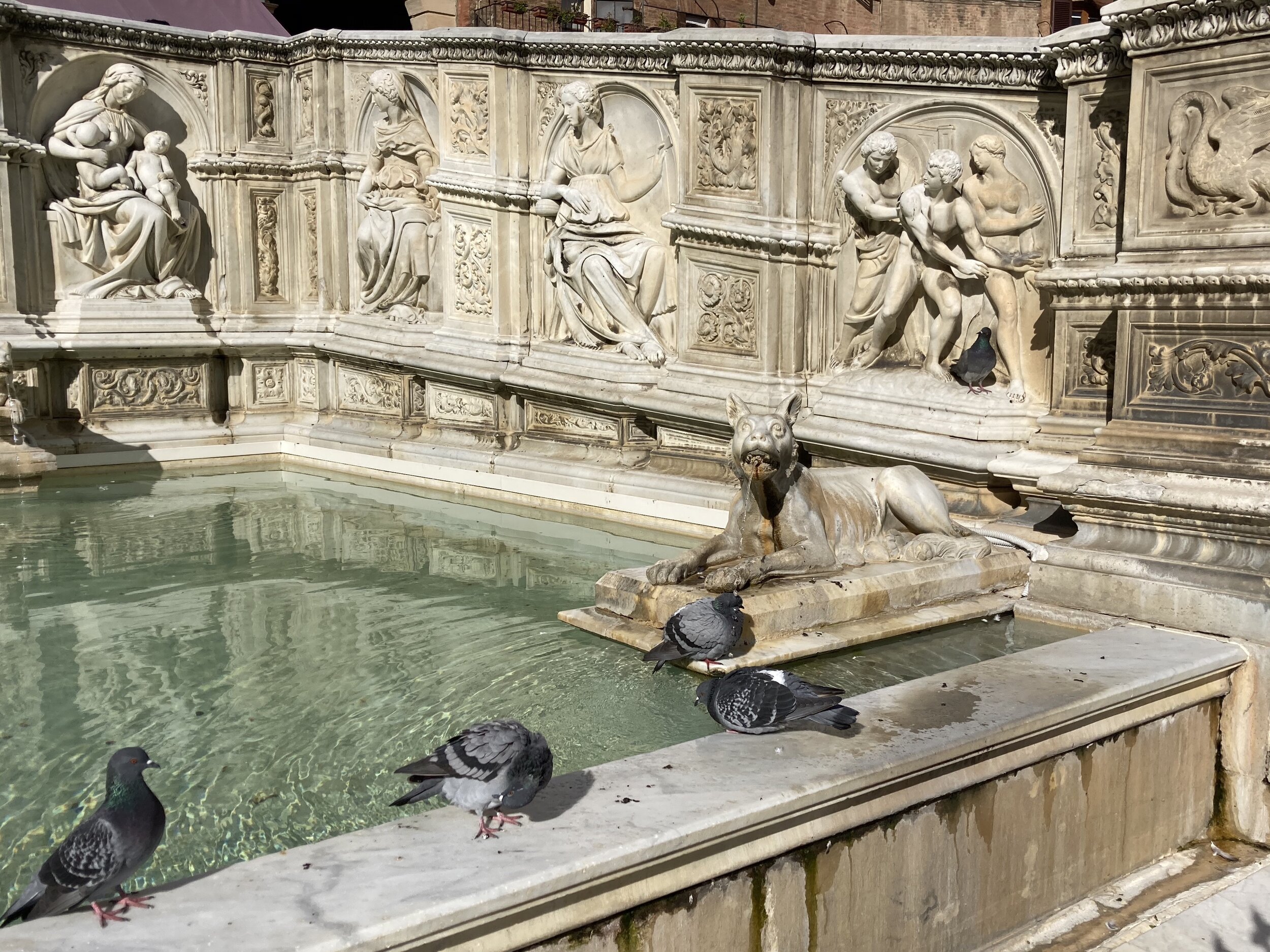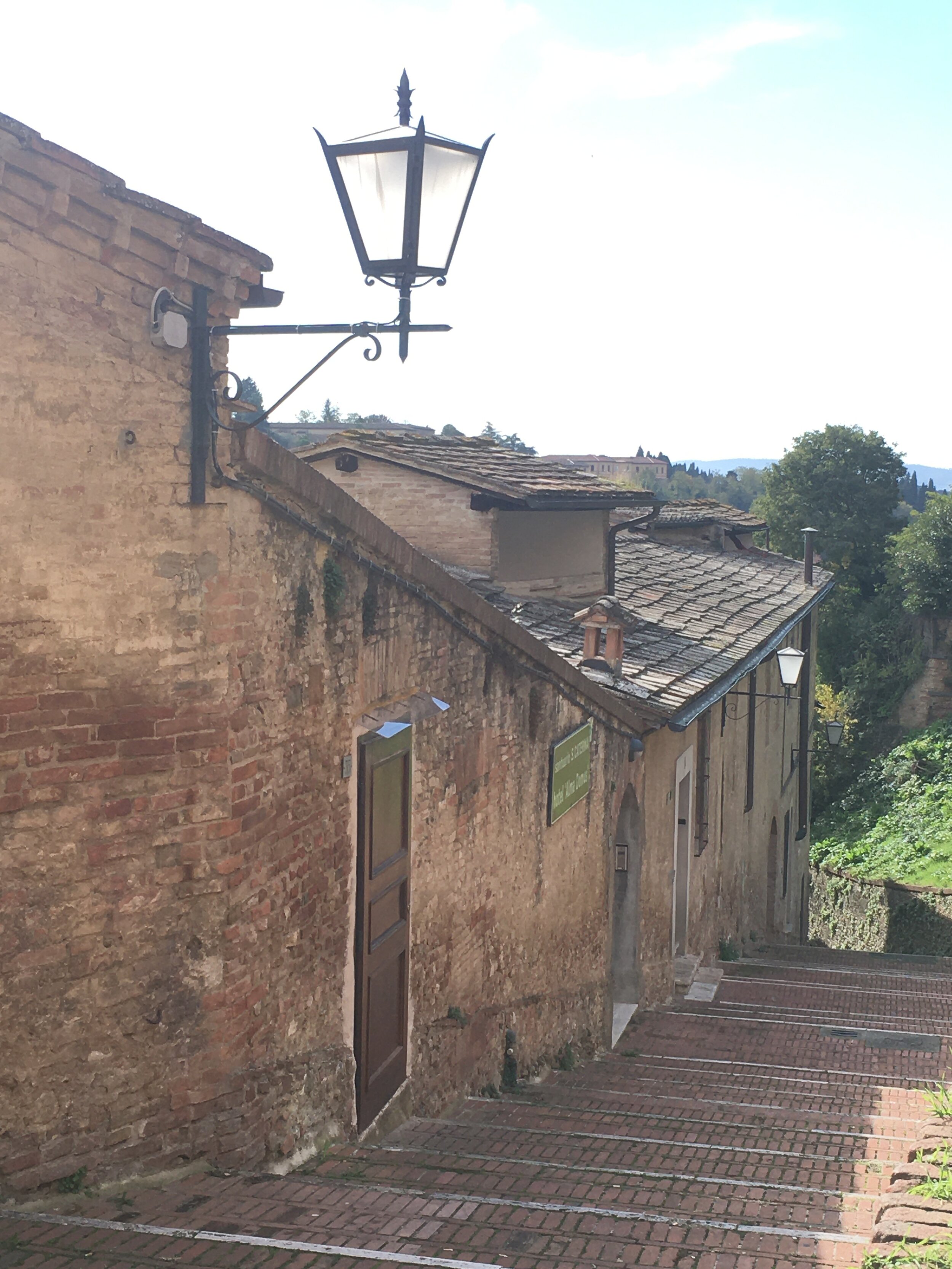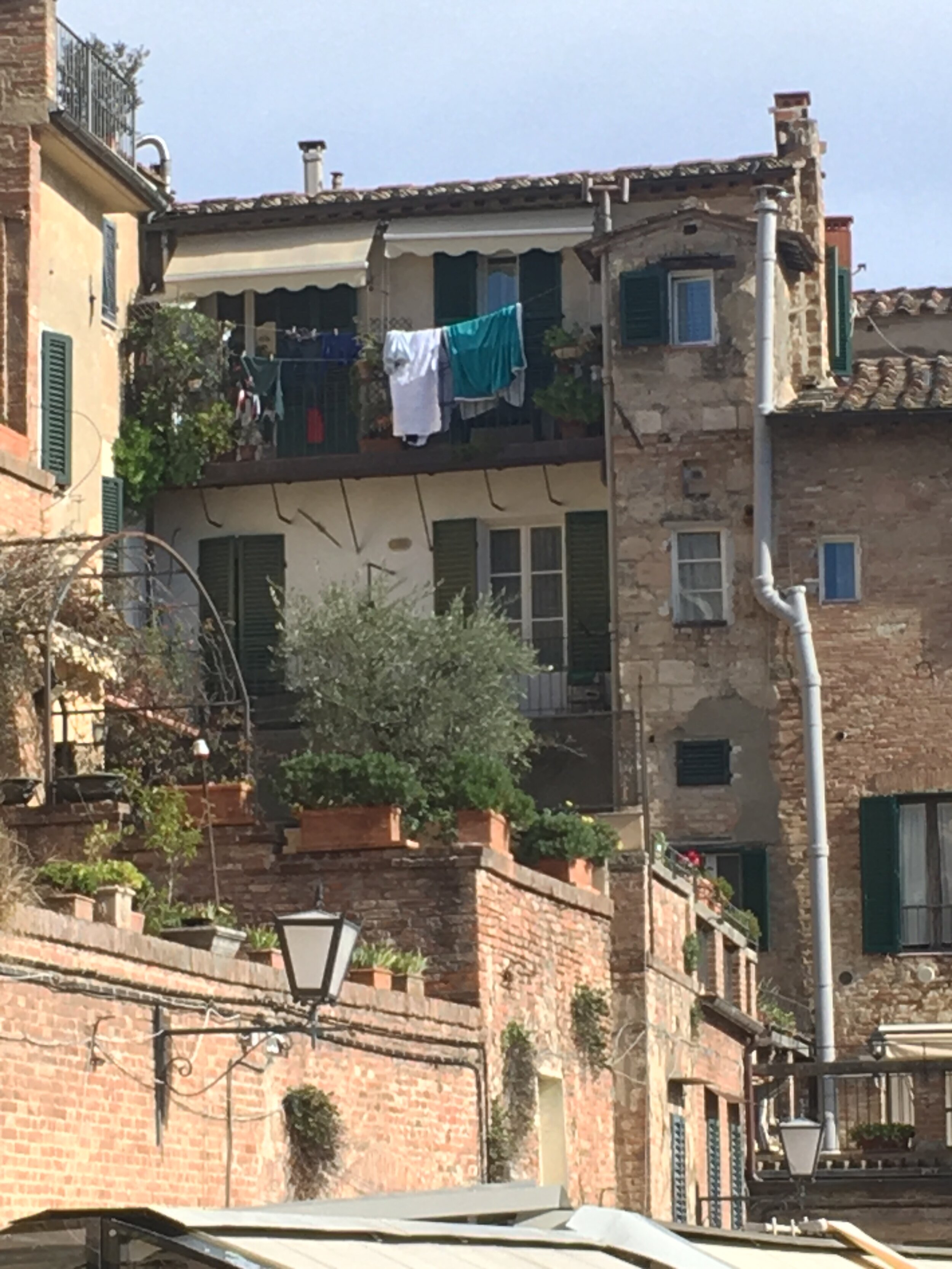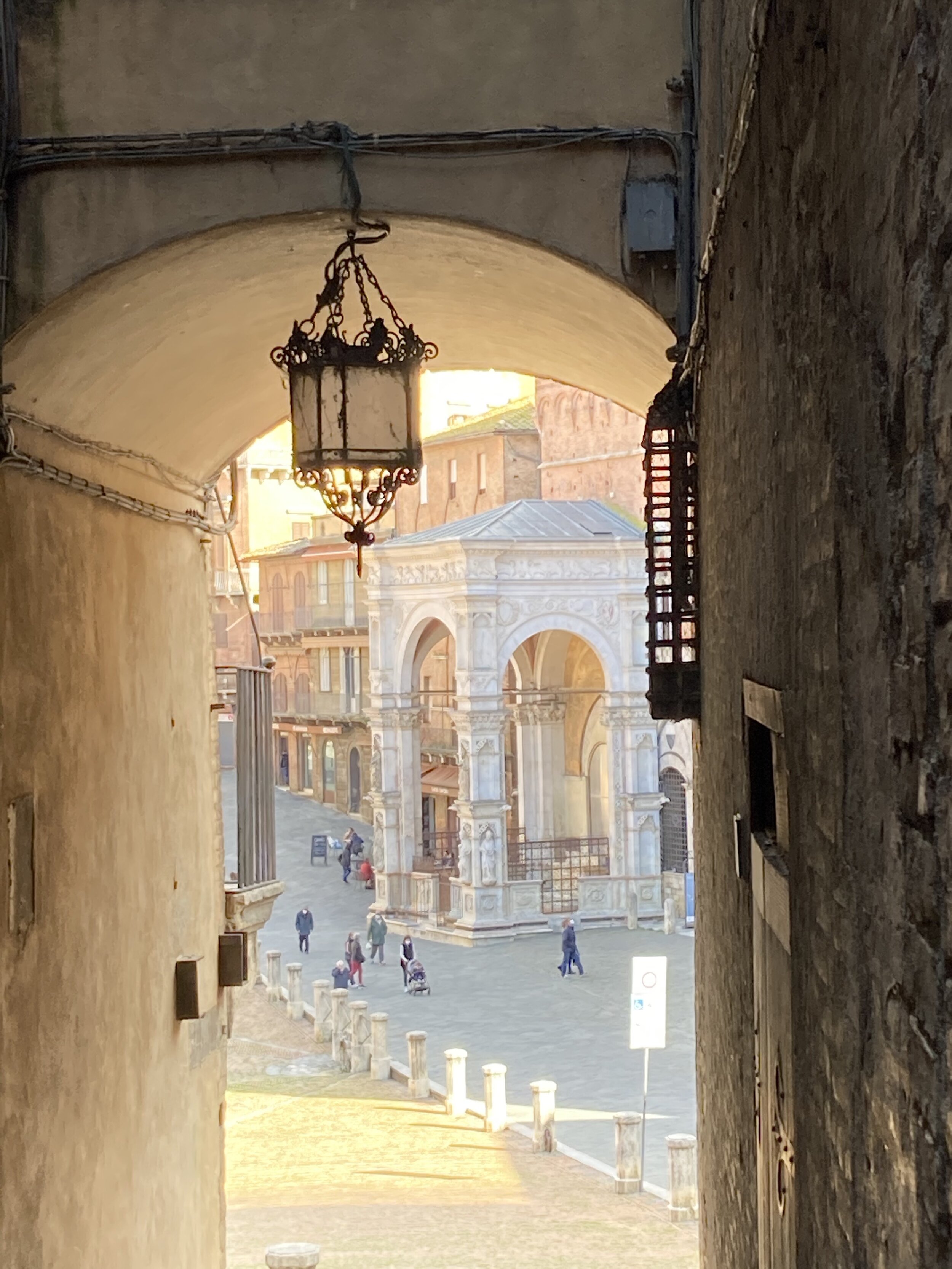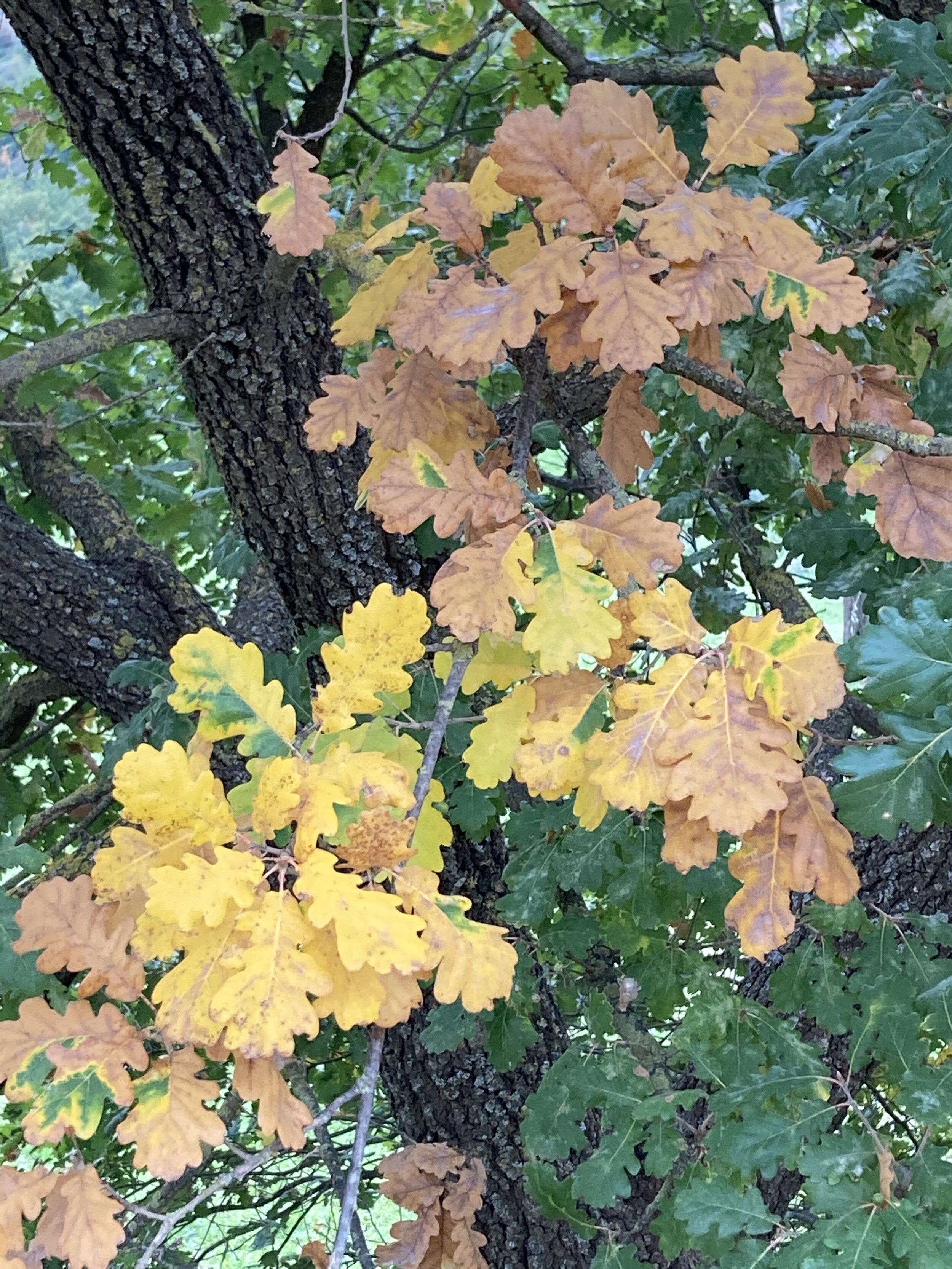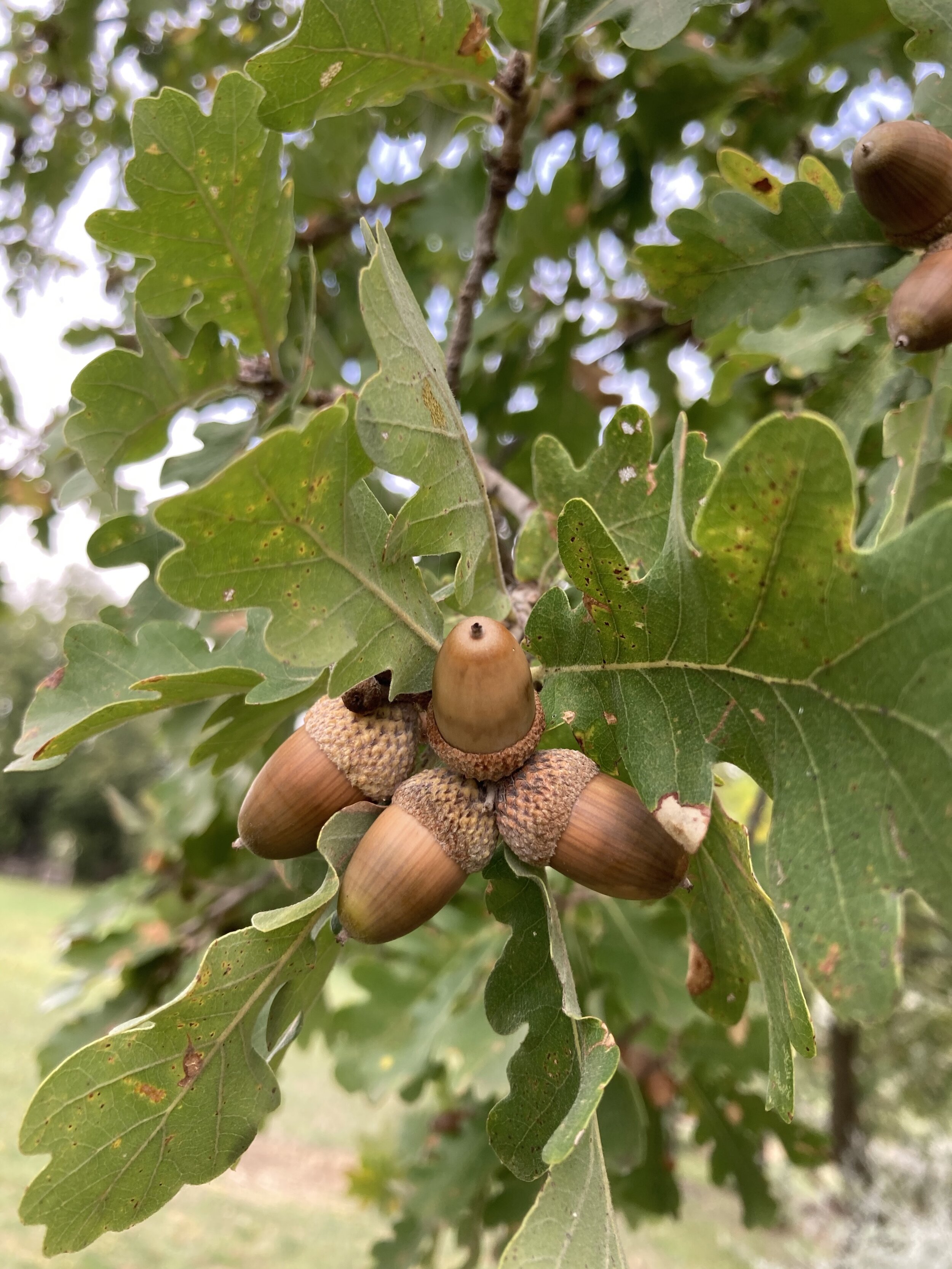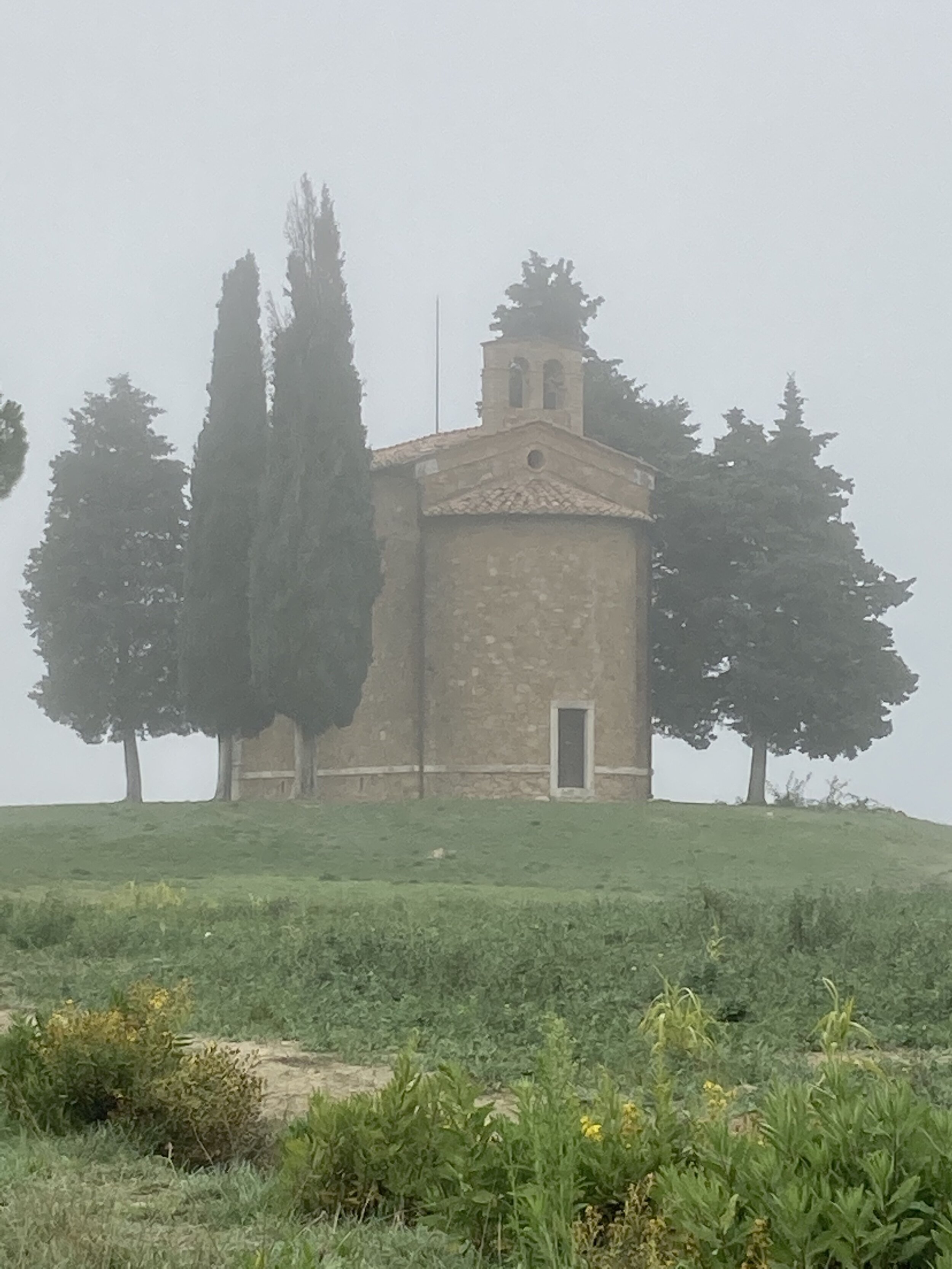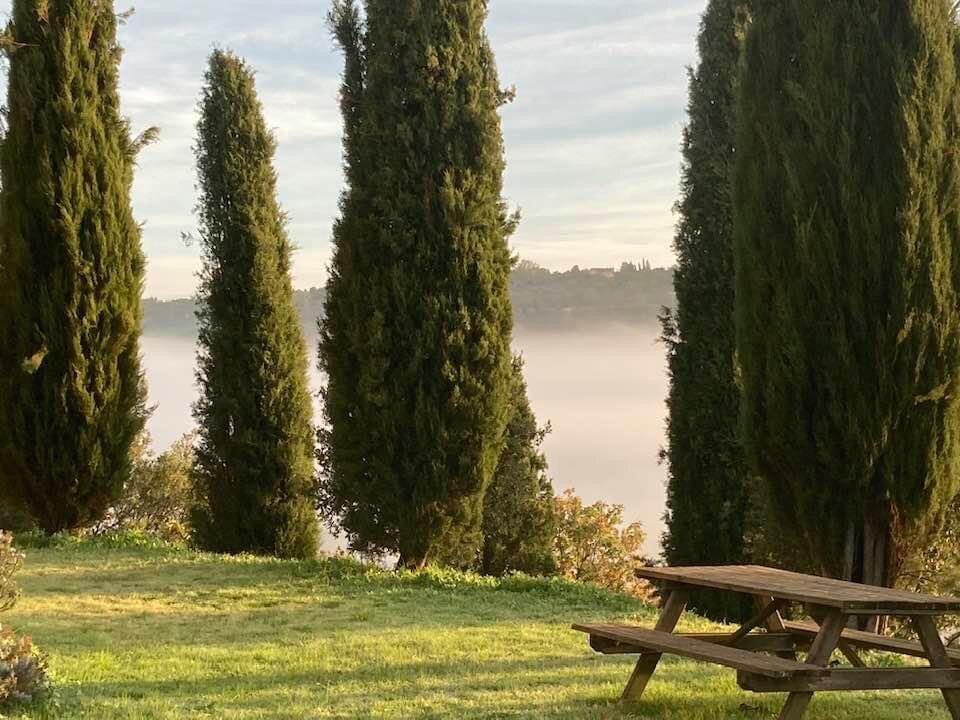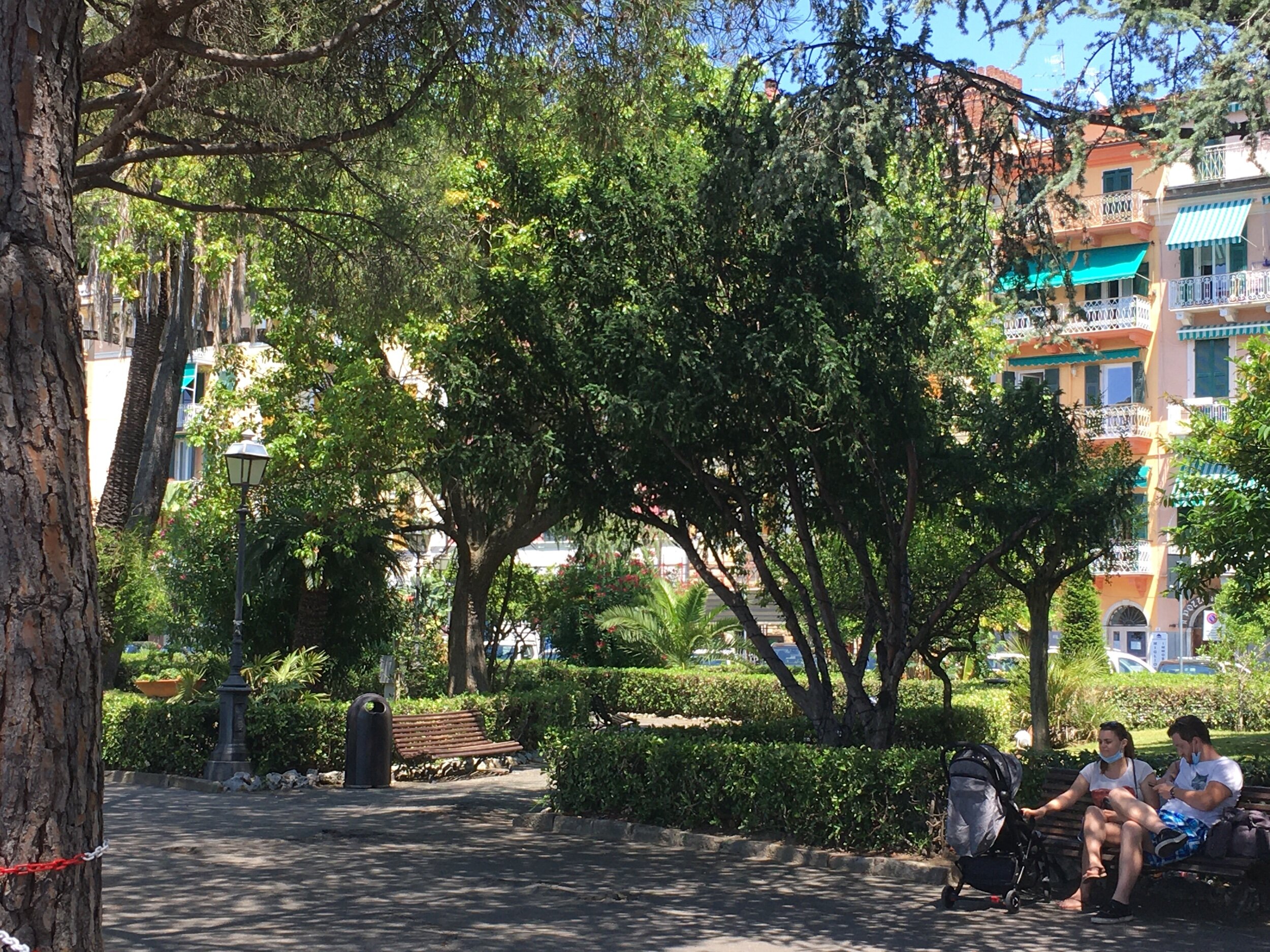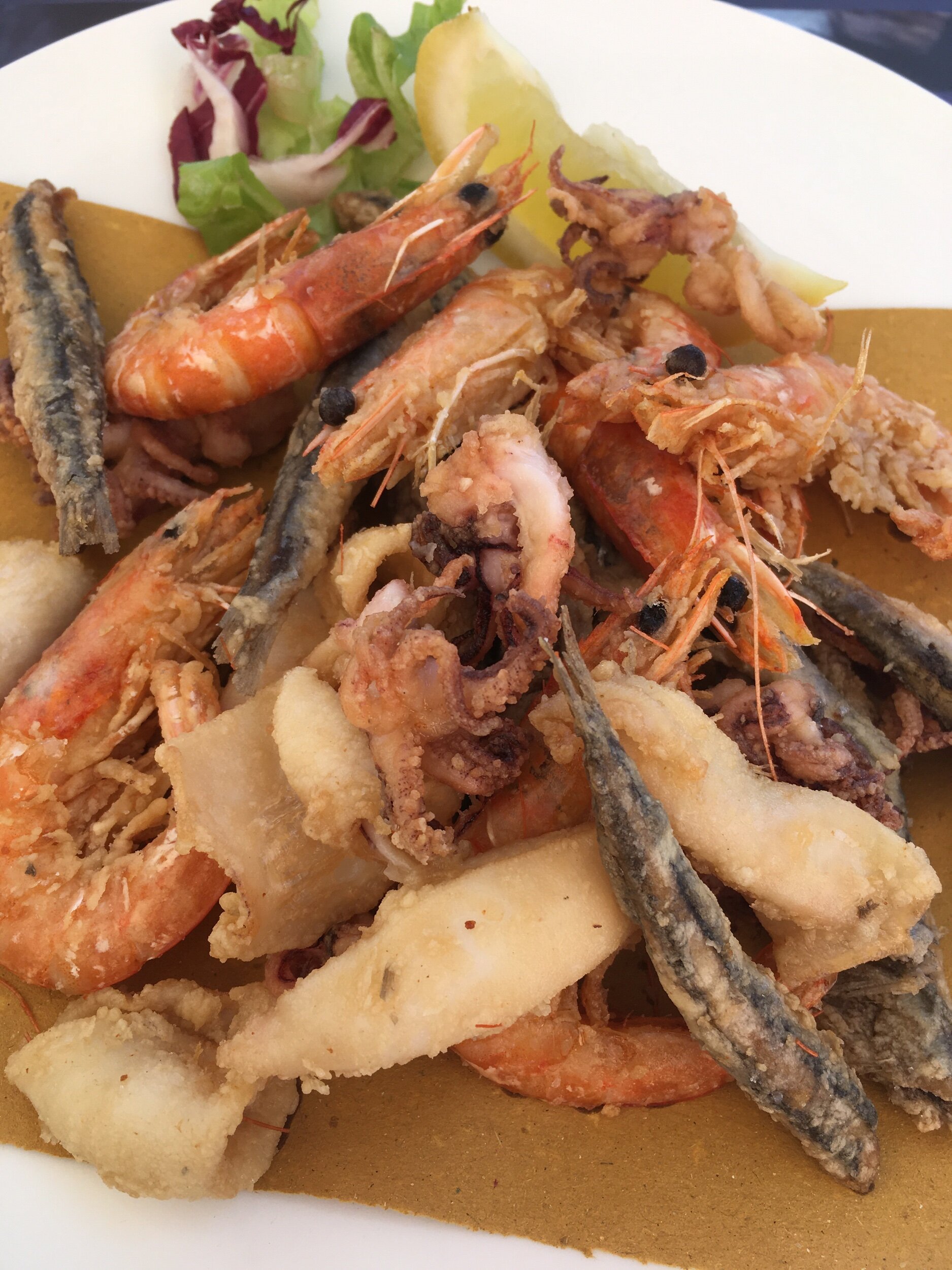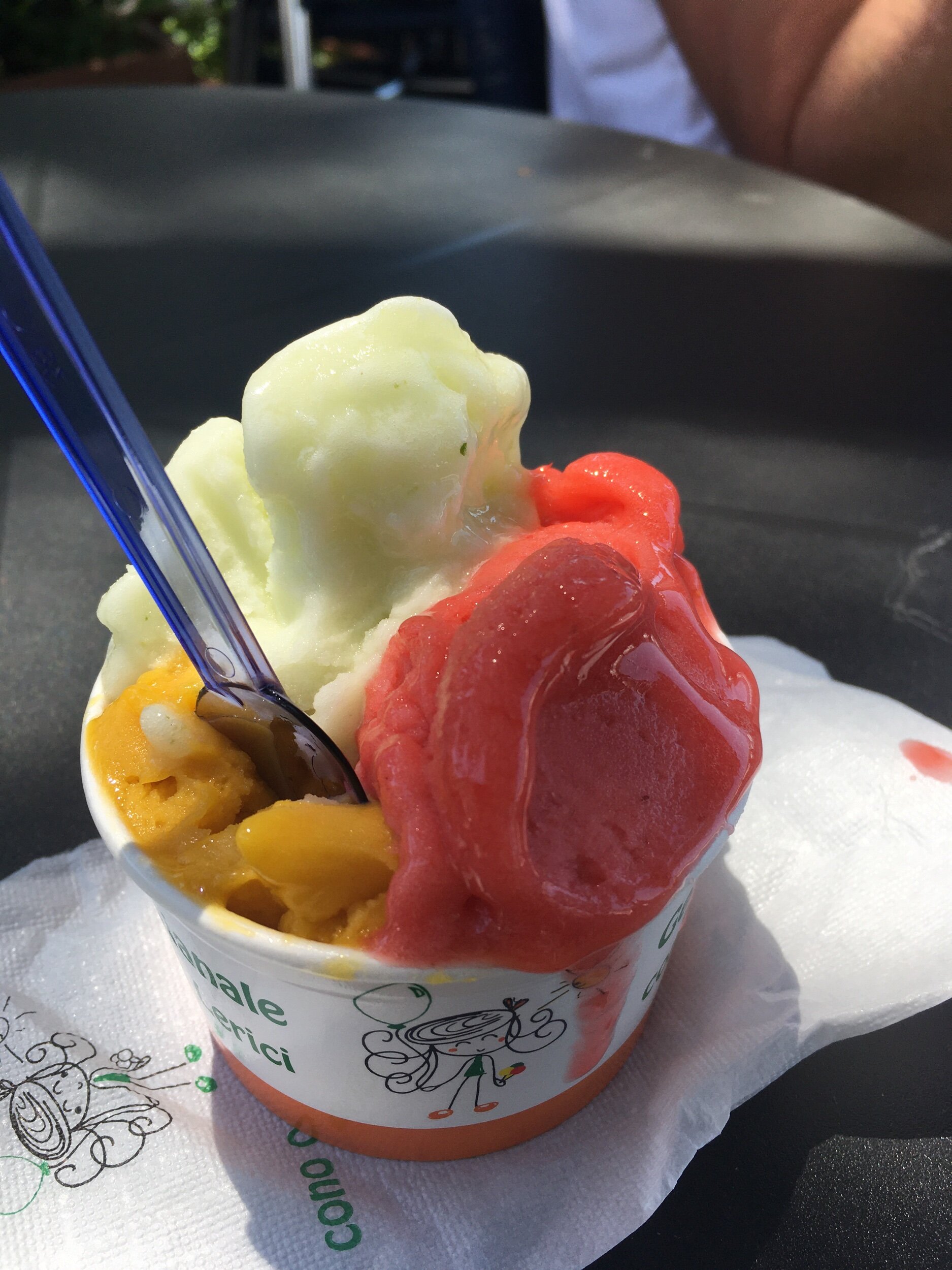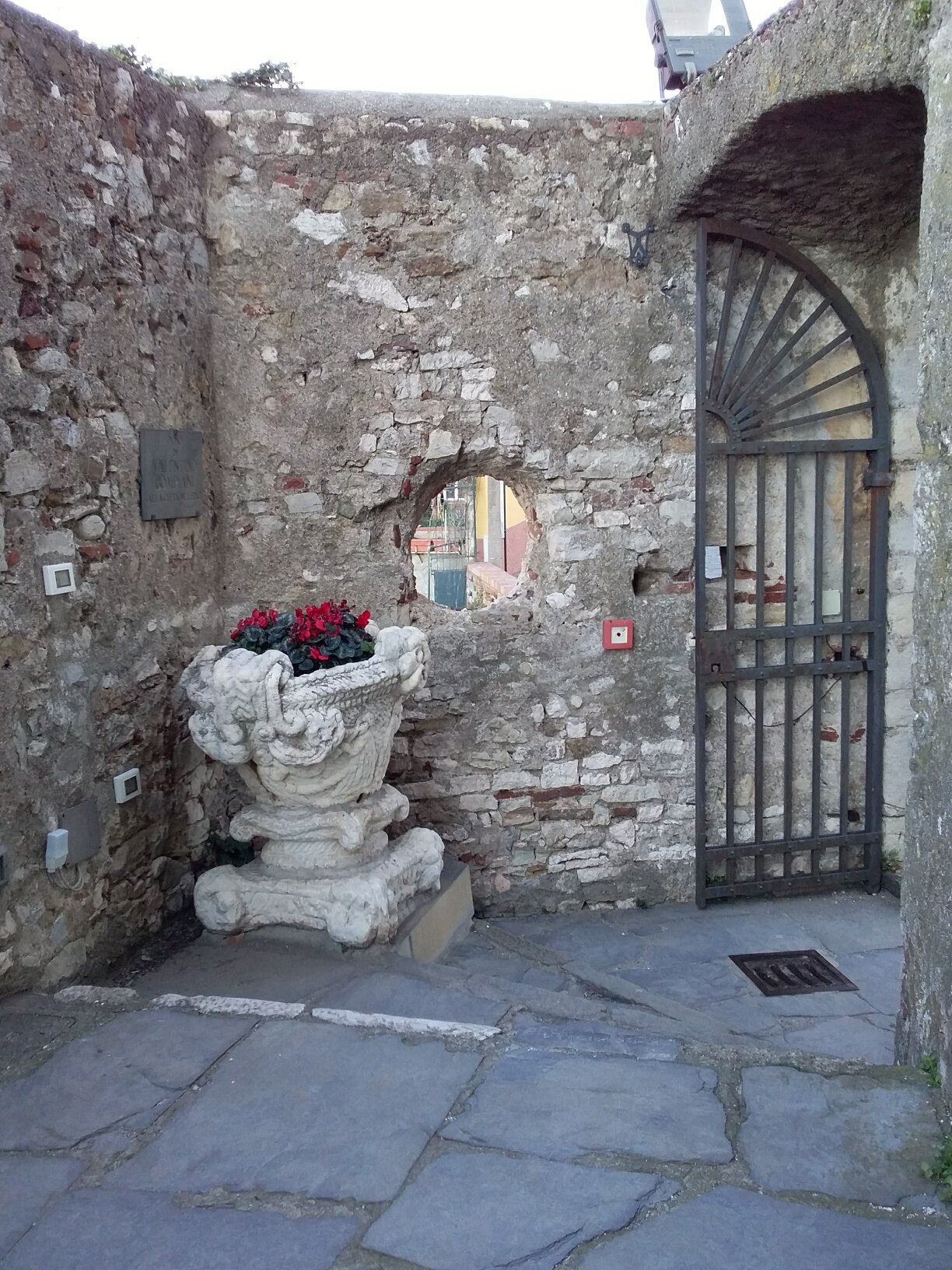Bagno Vignoni
Looking back over the past several posts, it is easy to understand why the entire Val d’Orcia is a UNESCO world heritage site. It would be impossible to pick just one town, one church, one monument with places like the Abbazia Sant’Antimo and Monticchiello in the running. To add one more reason why this valley is so special, add to the list the tiny hamlet of Bagno Vignoni.
In Italian bagno means bath, and here in Bagno Vignoni the baths are the hot spring fed pools for which this small hilltop village is famous. While there are certainly more modern spas located here today, the uniqueness of the town lies in its historic pools - sulfurous and hot, they’ve been used since Roman times. Pilgrims, popes, future saints, artists, and a host of important persons from centuries past have come to soak in the warm waters. Even before the medieval baths were built, the Etruscans came to the natural hot springs in this area.
Another view of the Baths of St. Catherine
At first glance, it would be easy to believe the village hasn’t changed for centuries. The main piazza in Bagno Vignoni is ancient and unlike any other I’ve seen in Italy. No central square with historic statue or fountain here. Instead, the central Piazza delle Sorgenti is a large, rectangular pool, fed by the hot springs just below. It dates back to the 1500’s and has changed little since that time. The pool is surrounded on 3 sides by a wall and, just beyond that, beautiful stone buildings. There are homes, shops, and a church standing just outside the wall of the baths.
An doorway in central Bagno Vignoni
On the fourth side of the large pool is the Loggia of Saint Catherine of Siena. Imagine her sitting there (well before she achieved sainthood) to admire the view of the pools. History says she did just that.
The Loggia of Saint Catherine (on the right)
On closer inspection, there are definitely signs of a more modern life here. Shops and cafes surround the main pool and branch out into the pretty side streets. A bit further on are hotels advertising spa services.
Not far from the central pool there is a series of small channels where the water flows to the cliffs that overlook the valley. Once upon a time these channels fed mills which were important to the economy of the town.
One of the abandoned buildings in the Parco dei Mulini
Today the Parco dei Mulini (Park of the Mills) is a place to dip your hands into the warm water and also to enjoy the expansive views. Looking down, the water runs over the cliff and way down below is a large pool for bathing.
A large pool lies at the foot of the cliffs of the Parco dei Mulini
Looking up, towards Castiglione d’ Orcia, is a huge ancient fortress, the Rocca a Tentennano (sometimes called the Rocca d’Orcia).
Rocca a Tentennano, a short drive from Bagno Vignoni
Bagno Vignoni is a marvel - and one more reason to spend some time exploring the Val d’Orcia.





